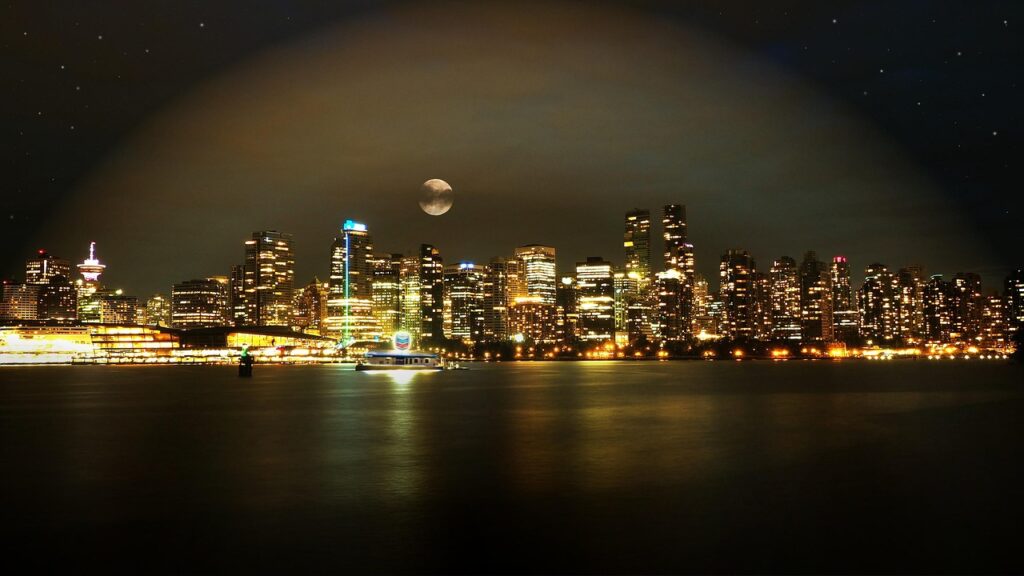Few experiences compare to stepping outside on a clear night and seeing the Milky Way arch across the sky—a reminder that we are part of something vast and ancient.
Yet for most people today, sadly, that view has quietly vanished. The skies above our towns and cities glow, and even remote countryside now shimmers under a permanent twilight.
Light pollution has become one of astronomy’s greatest modern challenges. But unlike many environmental issues, this one is completely reversible.
By understanding how light pollution is changing—and what simple steps we can take—we can still reclaim an awe-inspiring view of the stars.

The Fading Night: A New Age of Light Pollution
For centuries, the night sky guided explorers, inspired stories, and helped us understand our place in the universe. But in just a few generations, artificial light has erased that shared view.
According to recent research, more than 80% of the world’s population now lives under light-polluted skies, and the number is growing every year. In Europe and North America, it’s nearly impossible to find a truly dark sky without travelling hours from any city.
The rise of LED lighting has accelerated this shift. What began as a revolution in energy efficiency has also brought brighter, whiter light to almost every street, car park, and garden. The result? Nights that are never really dark—and constellations that fade from view.
Even space telescopes like the James Webb Space Telescope depend on darkness free from human interference to explore the distant universe.
The Hidden Costs of Excess Light
Light pollution isn’t just an issue for astronomers—it affects ecosystems, human health, and even our sense of wellbeing.
Wildlife: Many nocturnal animals rely on darkness to hunt, migrate, or breed. Artificial light confuses them, drawing insects away from natural habitats and disrupting bird navigation. Sea turtles, bats, and countless insects suffer from disoriented behaviour due to bright coastal or urban lighting.
Humans: Constant exposure to artificial light at night interferes with our circadian rhythms, the internal clock that regulates sleep and hormone cycles. Blue-rich light, in particular, suppresses melatonin and can lead to insomnia, fatigue, and mood imbalance.
Energy: Every unshielded bulb that spills light into the sky is wasted energy—literally power burned to illuminate nothing. It’s estimated that at least 30% of outdoor lighting energy is wasted this way, costing billions globally each year.
NASA’s Earth Observatory regularly publishes satellite images showing how the glow of artificial light is spreading across the planet.
LEDs: The Bright Revolution with a Dark Side
When LED lighting first arrived, it seemed like a win for both the planet and our wallets. Lower energy use, longer lifespan, cheaper maintenance—what could go wrong?
The problem lies in the colour temperature of many LEDs. “Cool white” LEDs, typically rated at 4000K or higher, emit a strong blue light that scatters easily in the atmosphere, creating a hazy, washed-out glow that spreads far beyond the source.
Cities that switched to high-intensity LEDs often found the night sky brighter, not darker. And because LEDs are so inexpensive to run, some councils simply installed more of them.
The solution isn’t to abandon LEDs—it’s to use them wisely. “Warm white” LEDs (2700K–3000K) are far less disruptive, and when combined with good shielding and smart controls, they can dramatically reduce skyglow.
What Backyard Astronomers Can Still Do
The good news? You don’t need to be an engineer or policymaker to make a difference. Every astronomer, homeowner, or stargazer can help protect the night in small but meaningful ways.
1. Control Your Own Lighting
- Use fully shielded fixtures that direct light downward, not outward or upward.
- Install motion sensors and timers so lights are only on when needed.
- Choose warm, low-colour-temperature bulbs (below 3000K).
2. Spread Awareness Locally
Talk to neighbours about light pollution—it’s often an issue people simply haven’t considered. Offer to demonstrate the difference between shielded and unshielded lights.
Encourage your local council to adopt dark-sky-friendly lighting guidelines. Many municipalities already have frameworks in place but need public support to act on them.
In the UK, the Campaign to Protect Rural England (CPRE) runs national star counts and publishes light pollution maps that you can share in your community.
3. Support Dark-Sky Organisations
Groups like DarkSky International, CPRE, and local astronomy societies run outreach programmes and petition efforts to safeguard night environments. Joining or donating helps strengthen their work and influence policy.

Dark Sky Sanctuaries: Hope in the Darkness
Despite the growing glow, pockets of true night still exist. The Dark Sky Places network—recognised by DarkSky International—includes some of the best-preserved skies on Earth.
In the UK, highlights include:
- Northumberland International Dark Sky Park
- Brecon Beacons National Park
- Galloway Forest Park
In the US, don’t miss:
- Big Bend National Park (Texas)
- Cherry Springs State Park (Pennsylvania)
- Natural Bridges National Monument (Utah)
Visiting one of these sanctuaries and seeing the milky way can be an amazing experience. Under a genuine dark sky, the Milky Way doesn’t show as a faint band—it’s a glowing river of light. It’s a reminder of what we’ve lost, and what we can still protect.
The Future of the Night Sky
Light pollution is one of the few environmental problems we can solve almost instantly. Turn off a light, and the stars return.
Technology doesn’t have to be the enemy of darkness. With smarter lighting, community awareness, and a shared respect for the night, we can strike a balance between safety and starlight.
Each small step—shielding a light, writing a letter, dimming a bulb—helps restore a little piece of the cosmos. Let’s make sure the next generation can still look up and see the Milky Way.
